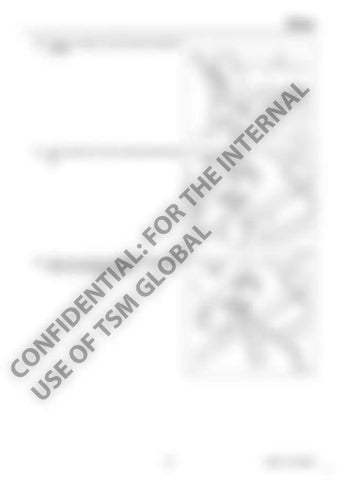Control Valve Procedures for Assembly and Disassembly of Control Valve 1. Assembly and disassembly precautions (1) General precautions
IN
TE RN
AL
[1] As hydraulic equipment has been manufactured with a high degree of precision and contains small gaps, perform assembly and disassembly in a clean location with little dust. Use only clean tools and cleaning oil and handle them with sufficient care. [2] When the control valve is removed from the actual machine, thoroughly clean the areas around line ports and insert plugs to take every precaution to prevent any entry of dust or water. Also when installing the control valve on the actual machine, do not remove plugs until lines have been installed. [3] Study the structure diagram before starting work and prepare the parts required by the objective and scope. Also, some parts have to be replaced as part of a subassembly because they cannot be supplied as single parts, so consult the parts list in advance to prepare for this. (2) Disassembly
CO US N F E ID O E F N TS TI M AL GL : F O OR BA T L H
E
[1] Each part has been manufactured with a high degree of precision, so be careful not to let parts bump each other or fall when handling them. [2] If parts are struck or pried off with excessive force during work because they are tight, this may cause burrs, damage or faulty assembly which may then cause oil leaks or reductions in performance. Perform work carefully. [3] Use identification tags to reassemble parts correctly by returning them to their original position after disassembly. [4] Do not reuse disassembled O-rings and backup rings. (Remove them with a wire that has a shoe horn-shaped end and be careful not to scratch the groove section at this time.) [5] Rust may form on parts due to moisture or debris if they are left disassembled or if work is abandoned in the middle of assembly. If a pause in the work is unavoidable, be careful to prevent rust and keep off dust.
(3) Assembly
[1] Observe the same cautions as with disassembly. [2] When performing assembly, remove metal fragments and foreign matter from parts, and check that there are no burrs or nicks on parts. If there are burrs or nicks, use a whetstone to remove them. [3] Replace O-rings and backup rings with new ones. [4] When installing O-rings and backup rings, be careful not to damage them. (Apply a thin layer of grease to ensure smooth installation.) [5] Tighten bolts and caps to the specified torque.
252
WSM-13-11-005EN 7























